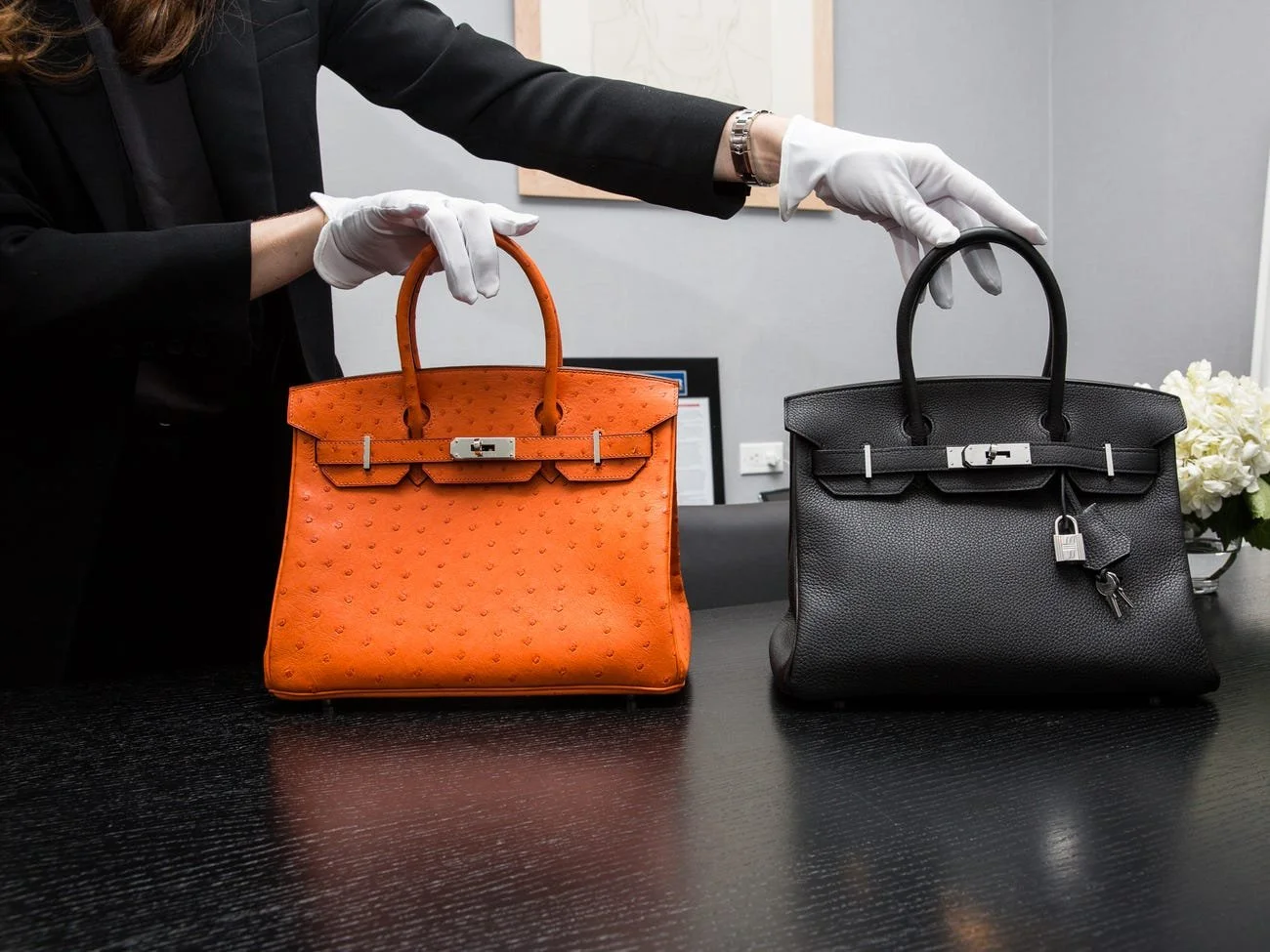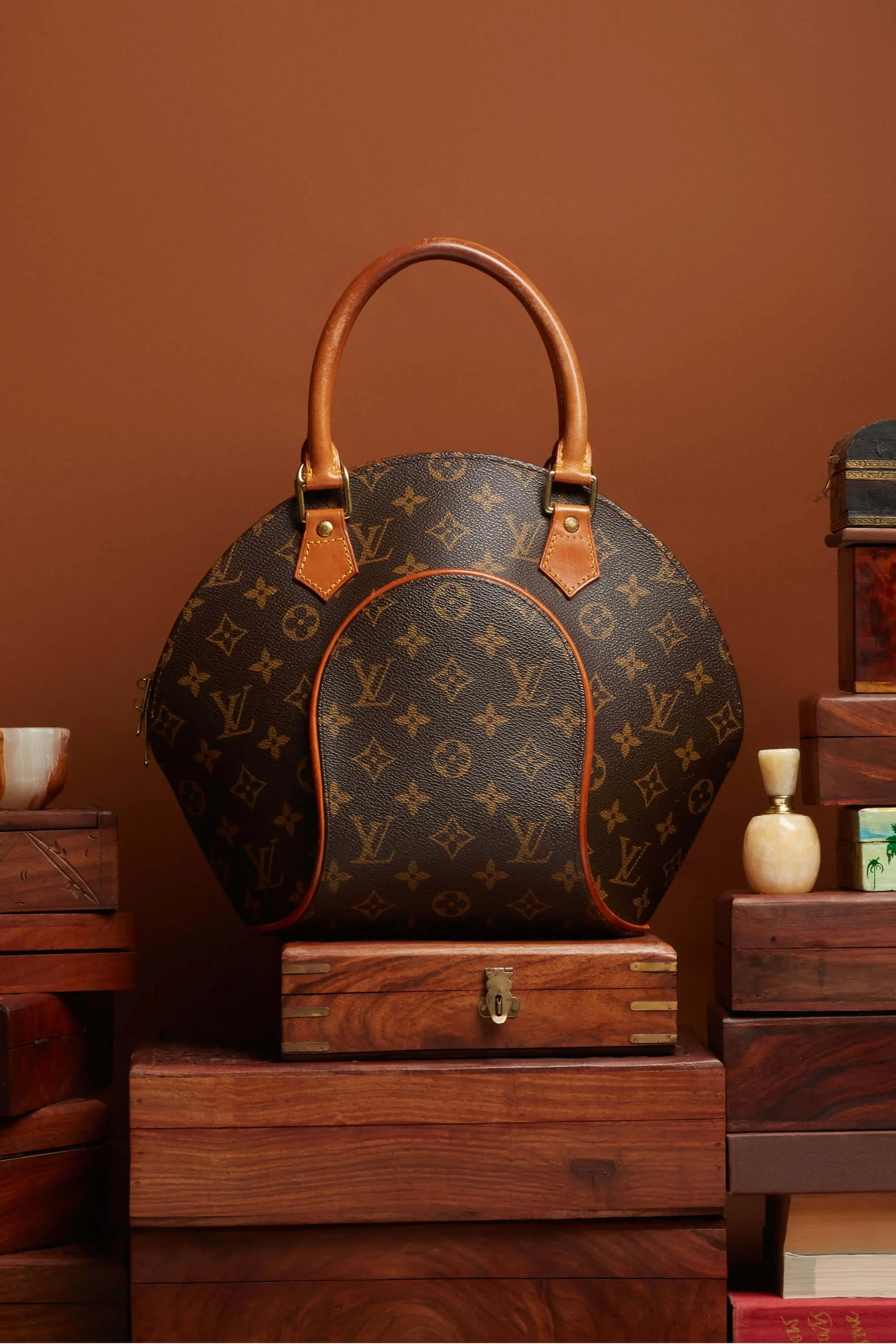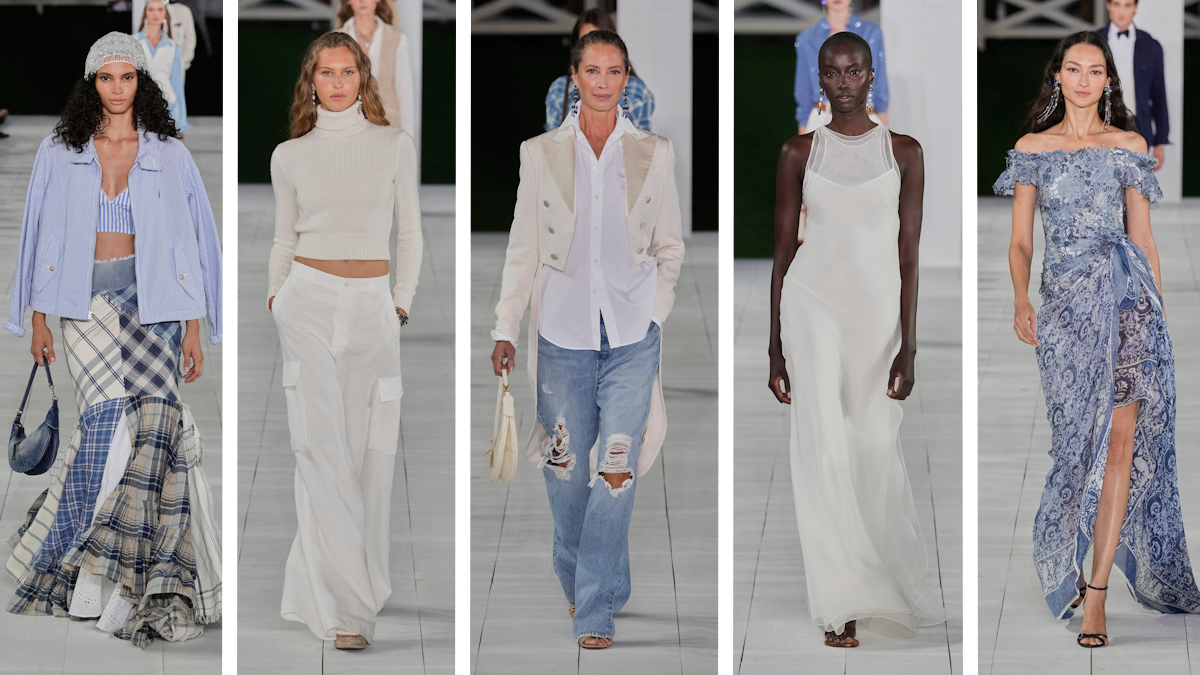Luxury Under Pressure: How Tariffs Are Redefining Value in Fashion
The Paradox of Price and Loyalty
Hermès Spring 2025 Show, W Magazine
In a year when tariffs are pushing up the cost of luxury goods on both sides of the Atlantic, you might expect even the most devoted shoppers to retreat. The reality is far more complicated—and far more intriguing. Yes, the sector has felt the sting: LVMH, Hermès and Estée Lauder have shed a staggering £73.87 billion in market value since Donald Trump’s tariff announcements (AInvest, 2025). Demand has dipped in both the United States and China—the world’s largest luxury market—and a trade war is hardly a growth strategy.
And yet, brands like Ralph Lauren, Coach and Birkenstock aren’t just surviving; they’re thriving. Sales remain buoyant, with loyal customers seemingly unfazed by price hikes that would sink lesser names (Washington Post, 2025).
It’s a paradox that upends conventional wisdom. In theory, higher costs should cool spending, especially in a climate of economic uncertainty. In practice, some labels are almost tariff-proof—shielded by more than clever marketing. Heritage, trust, cultural symbolism, and the promise of enduring value form a protective armour that price alone cannot pierce.
The stakes are high. Tariffs are no passing blip; they are reshaping the global luxury market, forcing brands to reassess pricing, positioning and purpose. For today’s consumer, the question isn’t just Can I afford this? but Is this worth it?—a far more emotional calculation.
In this piece, we’ll explore why certain brands tighten their grip as prices rise, why others lose their footing, and what this reveals about the evolving psychology of prestige. In the tariff era, loyalty is no longer just about money—it’s about meaning.
The Tariff Trigger — Why Prices Are Rising Now
Rolex GMT-Master II, British Vogue
Prada Spring/Summer 2025 Show, ELLE
By mid-2025, tariffs had shifted from political sparring to retail reality. In the U.S., the most dramatic blow landed on Swiss-made goods, with duties soaring to 39% after trade talks collapsed (Hodinkee, 2025). Swiss watchmakers, from niche ateliers to global giants, scrambled to ship inventory before the deadline, but the damage was done. DuBois et fils, for instance, raised the price of its DBF008 watch from $10,800 to around $14,500 almost overnight (Reuters, 2025).
Earlier rounds of tariffs had already pushed Rolex, Omega and Patek Philippe to raise U.S. prices by 3–10%, with further hikes now inevitable to absorb the new rates (Vogue Business, 2025).
Across the Atlantic, the freshly inked U.S.–EU trade deal brought a gentler outcome for European luxury houses. Duties on goods from Italy, France and other EU hubs were set at around 15%—manageable, but still enough to squeeze margins (WSJ, 2025). Analysts estimate brands will need to embed roughly 2% price increases in the U.S. (or 1% globally) to offset the hit without distorting regional pricing (Reuters, 2025).
For fashion, this is no minor inconvenience. Unlike fast fashion, which can shift production at will, luxury houses are bound to heritage ateliers, specialised craftspeople and supply chains decades in the making. Moving production risks diluting the very identity customers are paying for.
That leaves two options: absorb the tariffs and watch profits shrink, or pass the cost on to the client. Most have chosen the latter, forcing shoppers into a new kind of calculation—one where value isn’t measured purely in currency, but in heritage, symbolism, and the reassurance that some things are still worth paying more for.
The Loyalty Lock — Why Some Brands Thrive
Ralph Lauren Fall 2025 Collection, W Magazine
Coach Resort 2026 Collection, The Impression
Despite tariff pressure rattling the luxury sector, a handful of brands haven’t just endured but flourished. Ralph Lauren, Coach and Birkenstock stand out as anomalies in a market where most labels are bracing for slowdown. Consumers appear remarkably unfazed by price increases that would normally deter them, proof that these names are offering something more enduring than product alone. They are selling trust, cultural identity and the reassurance of lasting worth.
Ralph Lauren is perhaps the clearest example of heritage acting as armour. Decades of cultural resonance have transformed its collections from mere clothing into markers of lifestyle. A £1,000 blazer isn’t weighed up through cost per wear but as an emblem of aspirational Americana: timeless, familiar, safe. Despite warnings about squeezed margins, the company continues to post strong results and even raised its revenue forecasts, underlining the strength of its brand equity (Reuters, 2025). In an era of uncertainty, heritage feels like stability—and shoppers will pay for that comfort.
Coach’s revival tells a slightly different story. Once pigeonholed as mid-tier, it has successfully reframed itself as “accessible luxury” for a younger generation. Its handbags are modern, trend-aware, and crucially sold at full price—no mean feat in a climate where discounts are rife. Tapestry, its parent company, has recorded double-digit growth as Gen Z and millennial shoppers embrace the blend of quality and attainability (Reuters, 2025). For these buyers, a 15 % tariff-led increase is tolerable when the product carries both credibility and relevance.
Birkenstock, meanwhile, thrives on clarity of purpose. Its value proposition has never been confused: functional, comfortable, durable. Nearly all production remains in Europe, allowing it to control quality and pricing. Modest global price adjustments have absorbed the impact of tariffs without dampening demand, and the brand’s cult-like following has only deepened. For many consumers, the higher cost reinforces rather than undermines the shoe’s reputation for longevity (AInvest, 2025).
Together these brands illustrate a crucial truth: when emotional equity runs deeper than the price tag, loyalty is resilient. In difficult times, a purchase becomes less about ownership and more about allegiance—a declaration of faith in a brand’s promise. And in luxury, that kind of belief is priceless.
The Casualties — When Loyalty Isn’t Enough
LuisaViaRoma x British Vogue Florence Fashion Show 2023, British Vogue
Not every brand enjoys the cushion of deep-rooted trust or cultural capital. For some, tariffs have been less a test of resilience and more a brutal stress fracture. The most visible casualty this summer is LuisaViaRoma, the Florence-based luxury e-commerce pioneer, which recently sought court protection under Italian insolvency law (Vogue Business, 2025). Once celebrated for its avant-garde curation and high-touch service, the platform now finds itself trapped between escalating import costs and waning consumer enthusiasm. The problem wasn’t simply the price hikes. LuisaViaRoma struggled to articulate why it was the destination worth paying more for, particularly as rivals such as Mytheresa and Farfetch sharpened their own loyalty schemes and locked in exclusive collaborations. Without a clear enough identity to justify the tariff sting, even affluent shoppers began to drift.
Pandora offers another warning shot. Operating in a different tier of the market, the Danish jewellery brand has watched its sales and share price tumble by as much as 12–13% in recent weeks. A newly imposed 19% tariff on goods produced in Thailand is set to cost the company roughly $31 million this year, with an even heavier hit forecast for 2026 (WSJ, 2025). For a brand already saddled with perceptions of mass-market ubiquity, a price increase without a corresponding lift in perceived value proved a tough sell.
This is the “mid-tier squeeze” in stark relief: too expensive to pass as accessible, yet too ordinary to be deemed truly aspirational. In this fragile middle ground, tariffs do more than nibble at margins—they expose strategic weaknesses that marketing can no longer conceal. Where loyalty runs shallow, price is everything. And when price climbs without the ballast of meaning, customers don’t simply hesitate; they walk away.
Emotional Economics — The Psychology of Spending Through Inflation
Hermès Birkin Bags, Business Insiders
When prices rise, orthodox economics predicts consumers will pull back. Luxury, however, plays by a different rulebook—one driven as much by psychology as by arithmetic. Enter “treatonomics”: the impulse to indulge even during downturns, preserving a sense of pleasure, normalcy, or identity (AInvest, 2025). What began as the classic lipstick effect has evolved in 2025 into something bolder. Shoppers are buying ahead of the pain, snapping up big-ticket items before tariff-driven price hikes fully hit shelves (AInvest, 2025). It is part pragmatism, part psychology: secure the purchase now, avoid tomorrow’s price, and enjoy the rush of having outsmarted the system.
Generational divides sharpen this behaviour. Gen Z and Millennials, long adept at mixing high fashion with thrift, lean into resale platforms, rental models and indie labels to maintain their style without overreaching financially (AInvest, 2025). For them, novelty and self-curation matter as much—if not more—than a heritage logo. By contrast, Boomers and Gen X are more likely to double down on the tried and trusted. If a brand has delivered for decades, a higher price becomes easier to rationalise as investment: something built to last, to hold its value, and to retain prestige across years (McKinsey, 2025).
Cultural context complicates matters further. Luxury goods often function as Veblen goods—a term named after economist Thorstein Veblen to describe items whose desirability grows precisely because their price rises (Empirics Asia, 2024). This term is linked to his theory of conspicuous consumption which underpins much of today’s debate about loud versus quiet luxury. Loud luxury relies on visible signifiers—logos, recognisable silhouettes—that make wealth instantly legible. Quiet luxury, by contrast, is more coded: cashmere knits, discreet tailoring, and “if you know, you know” design cues. Both are still performances of status, just calibrated to different audiences. The Hermès Birkin and Kelly bags are textbook examples of the loud approach, where the steeper the price tag, the stronger the allure. But the equation is fragile. For a price rise to resonate, it must feel earned—anchored in heritage, scarcity or craftsmanship. If it comes across as opportunistic, the effect can backfire, alienating consumers and eroding trust.
At its core, luxury spending in an inflationary, tariff-laden climate is not a question of simple affordability but of justification. Consumers are less concerned with can I pay this? than with should I pay this? That subtle distinction is what determines whether a brand emerges strengthened from tariff turbulence or quietly slips from the wish list.
Quiet Luxury vs. Loud Logos — Status Signalling in a Tariff Era
Loro Piana Spring/Summer 2025 Collection , Dossier Magazine
Louis Vuitton Monogrammed Bag, Vogue Business
Earlier, we touched on how Veblen’s theory of conspicuous consumption frames the tension between quiet and loud luxury. Tariffs make that divide even sharper. Rising costs don’t just shape what consumers buy—they influence how they want to be seen. And in 2025, the luxury market has split more starkly than ever between two poles of status signalling.
Quiet luxury—discreet branding, impeccable fabrics, restrained silhouettes—has become the defining style mood of the decade (Business Insider, 2025). Labels such as Loro Piana, The Row and Brunello Cucinelli thrive here, selling investment pieces that whisper refinement to those “in the know”. Even Louis Vuitton, historically the high priest of the monogram, has pivoted under Pharrell Williams’ creative direction. His Spring–Summer 2026 menswear leaned heavily on neutral palettes, pared-back detailing and elevated materials—an unmistakable nod to the quiet luxury ethos (Business Insider, 2025). As the Wall Street Journal observed, in times of economic turbulence, understated design often outperforms flamboyance, which can feel tone-deaf when markets tighten (WSJ, 2025).
Yet logos remain potent. In many markets, visible branding still carries cultural weight as a public statement of resilience and success. For these consumers, a Louis Vuitton monogram bag isn’t simply an accessory—it’s a trophy of defiance, proof of affluence even under economic pressure (Empirics Asia, 2024).
What’s vanishing fast is the middle ground. Brands attempting to straddle subtlety and spectacle risk irrelevance: too expensive for casual shoppers, too indistinct for connoisseurs, and increasingly exposed by every price rise (WSJ, 2025).
Tariffs, then, aren’t only raising costs; they’re accelerating luxury’s cultural bifurcation. The choice is starker than ever—whisper or shout. And in both cases, the decision is less about economics than identity.
Winners’ Playbook — How Brands Can Protect Relevance
LOEWE ReCraft store in Osaka, Dezeen
For luxury labels in the tariff era, survival isn’t about battening down the hatches—it’s about sharpening their appeal. The brands thriving now aren’t necessarily the biggest or boldest; they’re the ones that know how to deepen loyalty when prices rise. Five habits stand out.
Curate, don’t saturate. Scarcity drives desire. Limiting collections, numbering pieces, or creating capsule drops doesn’t just manage costs—it amplifies allure. Analysts note that waitlists and scarcity strategies build urgency without cheapening through discounting (Kearney, 2025; Weitnauer, 2025).
Double down on heritage. In moments of economic pressure, consumers crave reassurance. Ralph Lauren and Hermès excel by embedding every product in narratives of craft, culture and continuity. As Vogue Business points out, heritage storytelling becomes a safety net when tariffs distort pricing (2025).
Enhance the afterlife. Post-purchase care is increasingly a deal-maker. Loewe’s ReCraft service, offering artisanal leather repairs, and Chanel’s new aftercare scheme both extend the relationship well beyond the till (Loewe, 2025; Forbes, 2024). A handbag becomes not just a product, but a promise.
Collaborate with intent. Strategic partnerships refresh relevance—but only if authentic. From luxury–streetwear fusions to artist-led capsules, the best collaborations add cultural and creative weight that justifies premium prices (McKinsey, 2025).
Keep loyalty aspirational. Transactional perks are passé. The most effective schemes offer access: private previews, atelier visits, behind-the-scenes experiences. As marketing experts note, invite-only tiers and clienteling models foster the sense of belonging that insulates against price sensitivity (Weitnauer, 2025).
Ultimately, brands that prosper under tariffs are those that remind customers why they fell in love with them in the first place—and give them new reasons to stay. Price, in this context, becomes a footnote to a larger narrative built on meaning, trust and cultural resonance.
The Risk of Getting It Wrong
LuisaViaRoma Store in Florence, WWD
Tariffs can sharpen a brand’s edge—but they can just as easily blunt it. The danger lies in assuming that higher prices automatically translate into higher prestige. Luxury consumers are savvy. If a price hike isn’t accompanied by reinforced value—whether emotional, cultural, or practical—it risks feeling like opportunism. And nothing erodes trust faster than the sense that a brand is cashing in rather than standing for something.
In today’s hyper-connected market, that perception spreads at speed. Social media acts as both magnifier and judge: side-by-side comparisons highlight discrepancies between craftsmanship and inflated cost, fuelling public criticism. The backlash is often sharpest among younger buyers, who are both digitally native and culturally attuned. They are quick to spot inauthenticity, and quicker still to call it out.
The consequences go beyond momentary bad press. Once loyalty cracks, it rarely returns. A poorly judged pricing strategy doesn’t just slow sales—it risks redirecting consumers entirely. Some migrate towards competitors who better justify their value; others turn to the resale market, where pre-owned luxury offers the same prestige without the tariff premium. Crucially, in the resale space, the brand loses control of both narrative and pricing power.
This is why tariffs aren’t simply a financial challenge; they’re a credibility test. In luxury, credibility is the currency that underpins every transaction. It’s what allows Hermès to charge five figures for a Birkin, or why Ralph Lauren’s blazers retain appeal even in volatile markets. Strip credibility away, and all that remains is a product—subject to the same scrutiny, and the same scepticism, as any other.
In the end, tariffs don’t just measure balance sheets. They measure integrity. And in a world where perception is everything, that’s the one cost luxury brands can’t afford to mishandle.
Value Beyond Price Tags
Ralph Lauren Spring 2025 Collection, The Fashion Spot
Tariffs may be the spark, but they are not the story. In today’s market, the decision to invest in luxury has less to do with the number on the label and far more to do with what stands behind it. The brands emerging stronger from this moment are not those chasing volume through discounts or attempting to blunt price rises with short-term fixes. They are the ones with a crystal-clear identity, rich storytelling, and a bond with their customers that outlasts economic turbulence.
Price can always be matched. Craftsmanship, even at the highest level, can increasingly be imitated. But trust, heritage and cultural resonance cannot be replicated overnight. These qualities form the bedrock of resilience in luxury. They are what allow certain houses to weather tariff surges, political trade wars, or shifting consumer moods without losing relevance.
For today’s buyer, worth it is no longer just a financial calculation—it is an emotional one. Does the brand stand for something? Does the purchase connect them to a lineage, a culture, or a community? Does it feel like an investment in more than a product? Those are the questions that shape behaviour in 2025.
For the labels that grasp this, tariffs are less a threat than an opportunity: a chance to reinforce meaning, deepen loyalty, and demonstrate that value in luxury has never been defined by price alone.
Because when the numbers shift, surface fades, and imitation floods the market, one truth remains: the real currency of luxury is not cost—it is connection.











